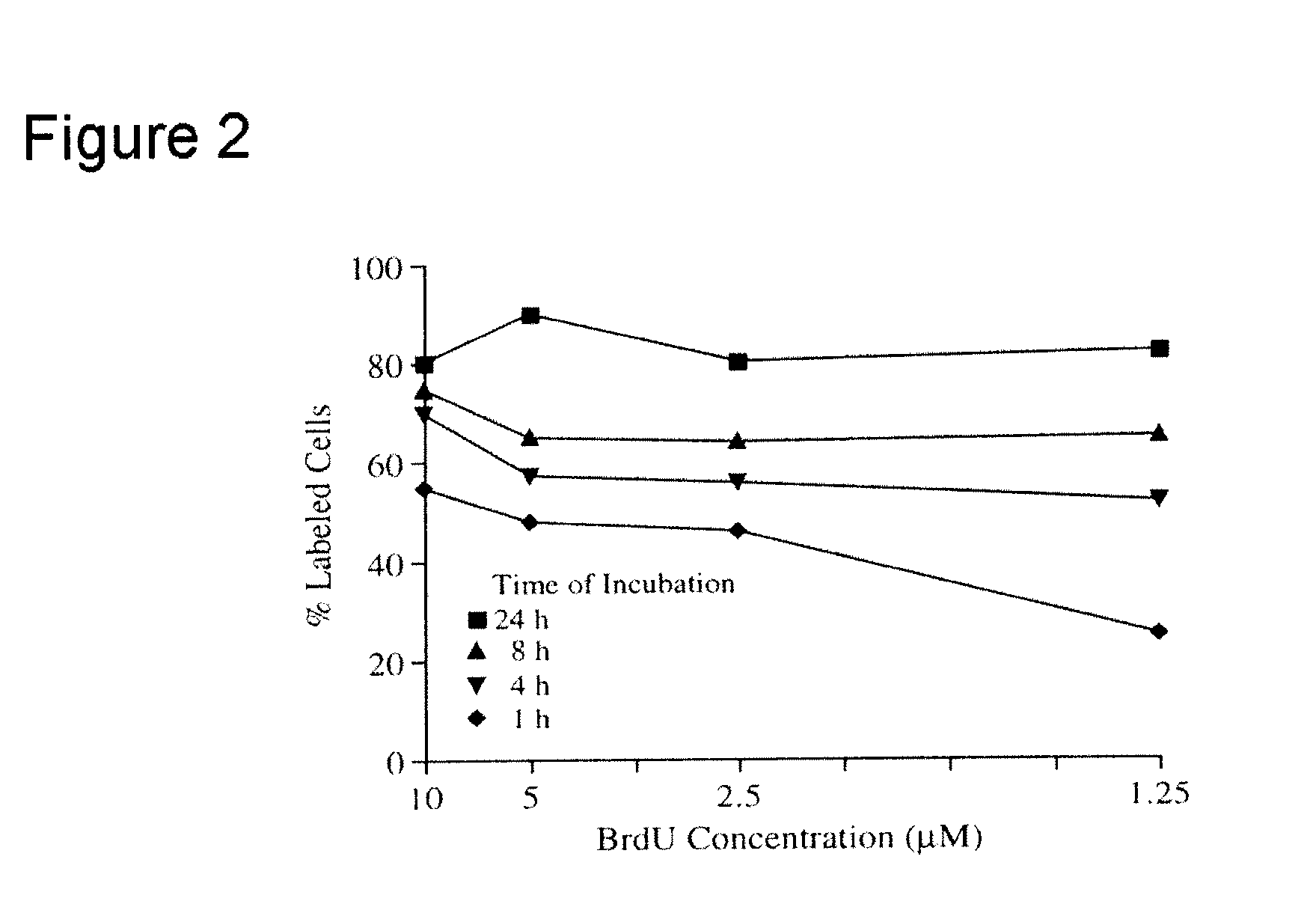Microcytoxicity assay by pre-labeling target cells
- Summary
- Abstract
- Description
- Claims
- Application Information
AI Technical Summary
Benefits of technology
Problems solved by technology
Method used
Image
Examples
Embodiment Construction
[0013]The present inventor has discovered that the serious weaknesses of OMCA, discussed above, are largely overcome by selective pre-labeling of target cell DNA, as can be effected, for example, with 5-bromo-2′-deoxyuridine (BrdU), a DNA metabolic label. The incorporated label in nuclear DNA of target cells can be detected selectively at the end of IMCA. With BrdU as label, detection can be by means of specific immunocytochemical staining with peroxidase- or alkaline phosphatase-conjugated anti-BrdU antibodies (11).
[0014]Pre-labeling of target cells, pursuant to the present invention, has not been previously used in MCA. It allows for selective and distinct staining of target cell nuclei, which are morphologically much more uniform objects in size and shape than whole target cells, and, being separated by unstained cytoplasm of neighboring cells, are better defined individual objects for counting than whole cells. In accordance with the present invention, therefore, pre-labeling of...
PUM
 Login to View More
Login to View More Abstract
Description
Claims
Application Information
 Login to View More
Login to View More - R&D
- Intellectual Property
- Life Sciences
- Materials
- Tech Scout
- Unparalleled Data Quality
- Higher Quality Content
- 60% Fewer Hallucinations
Browse by: Latest US Patents, China's latest patents, Technical Efficacy Thesaurus, Application Domain, Technology Topic, Popular Technical Reports.
© 2025 PatSnap. All rights reserved.Legal|Privacy policy|Modern Slavery Act Transparency Statement|Sitemap|About US| Contact US: help@patsnap.com



